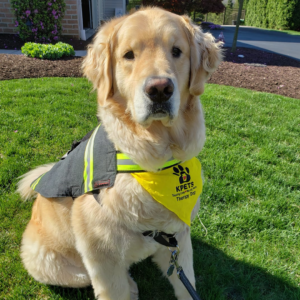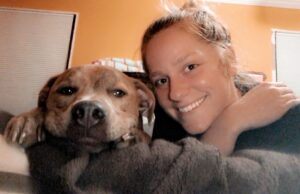Written by: Humane Pennsylvania CEO & President, Karel Minor
In the interest of full disclosure, I must share that this is a complete rewrite of my first draft of this blog post. After I completed writing the initial version and read it, all I could think was, “Good Lord, what a depressing and miserable update!”
I’d shared many incredible accomplishments, but it had come out in a woeful, beaten-down tone rather than an upbeat one. I realized at that moment that my writing had been affected by the muscle memory of working under COVID conditions for nearly two years. For almost two years, everything that could go wrong seemed to do so.
There was constant uncertainty. And even when things worked out, it felt like more of a struggle than it should, and we all just got worn down and tired. I suppose it makes sense that after working and living like that, even great news could come out like Eeyore’s shopping list. Even now, my weary self wants to groan, “Oh. My. Gawd. Now it’s freaking Omicron?”
The thing is, we had some great news and accomplished some remarkable things this past year. So it’s time to shake those muscles loose and take a second swing at this. This time I want to express the enthusiasm, gratitude, and joy my heart and mind feel for all the positive outcomes we’ve experienced this year.
time to shake those muscles loose and take a second swing at this. This time I want to express the enthusiasm, gratitude, and joy my heart and mind feel for all the positive outcomes we’ve experienced this year.
COVID: Okay, so there was COVID — and it has been awful for us, along with the rest of the world. However, our staff, volunteers, and supporters came through like champs. We started getting our staff vaccinated as early as last March, which allowed us to open back up sooner and more safely than most places. Our team handled the ever-changing protocols and rules imposed on us with grace and understanding. Through hard work (and some good luck), I am proud to be able to say that none of our staff faced layoffs. They worked hard, and even when they (and I!) contracted COVID, we recuperated and got back to work helping animals and people.
During the past year, we distributed about a quarter-million pounds of food and supplies via HPA’s Spike’s Pet Food Pantry, through our partner organizations, and as the organization tapped by the PA State Animal Response Team to coordinate pandemic pet food distribution. That’s on top of nearly three-quarters of a million pounds the prior year. Thanks to a second-round PPP grant, we were able to make up financial shortfalls that resulted from our inability to hold regular fundraising events. COVID has undoubtedly proved to be pretty crummy, but all our folks stepped up to help others, even as they had to cope with the pandemic personally. I could not be prouder of our entire team.
The Freedom Center Opens: Filed under “Better Late Than Never,” after a construction delay that lasted more than nine months due to COVID, HPA’s brand spanking new Freedom Center for Animal Life-Saving finally opened to the public in July! Named by an anonymous donor who wanted the name to reflect his belief in the concept of freedom for animals and people, it’s more than just a better version of our old Reading shelter.
The Freedom Center offers upgraded traditional sheltering and adoption spaces to allow us to help more animals than ever before. And those conventional programs are merged and intertwined into medical, counseling, and education spaces that support HPA’s Healthy Pets Initiative. Healthy Pets aims to give everyone the support they need to be great caretakers, from accessible and affordable veterinary care to a wide range of pet-and-people-first programs that keep pets at home. If you haven’t visited the Freedom Center, it’s worth the trip!
We are grateful for all the folks who supported this project at all financial levels, from a few dollars to hundreds of thousands of dollars. COVID put the brakes on our campaign halfway through, but supporters have been steadily contributing to Spike’s 700 and Tilly’s 200 Giving Clubs to make up for lost time. We hope you will, too!
 Neighborhood Clinics: COVID made it more challenging, but it didn’t stop us from going into neighborhoods to connect with pets directly and provide critical vaccines, microchip identification, and other vital healthcare services. Our specially trained teams of staff and volunteer veterinarians, technicians, and assistants provided services week in and week out to thousands of people in 2021. We partnered with the Animal Rescue League to share data to allow us to map parvo outbreaks in Reading and then work together at community clinics held at Amanda E. Stout Elementary School. This partnership let us help more than we could have alone, and the data sharing allowed us to deliver that help where it was needed most.
Neighborhood Clinics: COVID made it more challenging, but it didn’t stop us from going into neighborhoods to connect with pets directly and provide critical vaccines, microchip identification, and other vital healthcare services. Our specially trained teams of staff and volunteer veterinarians, technicians, and assistants provided services week in and week out to thousands of people in 2021. We partnered with the Animal Rescue League to share data to allow us to map parvo outbreaks in Reading and then work together at community clinics held at Amanda E. Stout Elementary School. This partnership let us help more than we could have alone, and the data sharing allowed us to deliver that help where it was needed most.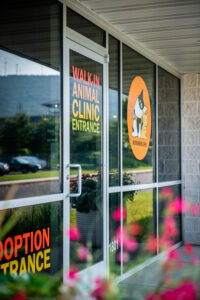
Healthy Pets Walk-In Clinics: One of the most exciting aspects of the Healthy Pets Initiative and the Freedom Center is opening one of the nation’s first “walk-in” vet clinics. Sponsored by Jay Rosenson in memory of Elaine Rosenson, the clinic began providing service hours to the community in 2021. It expects to open full time once veterinary staff is entirely in place. Modeled on human quick-clinics, which offer limited services at a lower cost with faster access, the Healthy Pets Walk-In Clinic fills the gap between our neighborhood clinics and our public Humane Veterinary Hospitals.
Best of Berks Veterinary Hospital: Speaking of Humane Veterinary Hospitals Reading (HVH Reading), we are excited and proud to have been named Best of Berks Veterinary Hospital by Berks County Living readers this year! While it may have been a far-off goal when we first opened for public veterinary services in our cramped quarters of the old  Berks Humane Scholar Center shelter in 2006, it’s lovely to have it become a reality. Both HVH Reading and Lancaster are American Animal Hospital accredited and open to the public. Our hospitals were the first non-profit hospitals in Pennsylvania to achieve accreditation — and among fewer than 30 in the country. Less than 15% of the 36,000 for-profit vet practices are accredited.
Berks Humane Scholar Center shelter in 2006, it’s lovely to have it become a reality. Both HVH Reading and Lancaster are American Animal Hospital accredited and open to the public. Our hospitals were the first non-profit hospitals in Pennsylvania to achieve accreditation — and among fewer than 30 in the country. Less than 15% of the 36,000 for-profit vet practices are accredited.
With the motto “For pets, not for profit,” our little shelter-that-could has led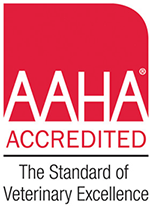 the nation in recognizing the barriers to access to vet care for large portions of our communities and then finding ways to deliver affordable, high-quality care sustainably. I was recently one of only about 50 people nationwide to participate in an ASPCA “Access to Care” Conference, which sought to find ways to expand access and remove barriers to vet care. It’s an exciting effort, and HPA is a recognized national leader and voice in this vital work. If you aren’t already a client of one of our two public hospitals, check us out.
the nation in recognizing the barriers to access to vet care for large portions of our communities and then finding ways to deliver affordable, high-quality care sustainably. I was recently one of only about 50 people nationwide to participate in an ASPCA “Access to Care” Conference, which sought to find ways to expand access and remove barriers to vet care. It’s an exciting effort, and HPA is a recognized national leader and voice in this vital work. If you aren’t already a client of one of our two public hospitals, check us out.
 If you are a veterinarian or a veterinary tech, we’re hiring! You can join a practice that offers all the benefits and support of a “gold-standard” practice, and also lets you help animals and people and practice medicine like a vet — not according to a corporate checklist. You don’t know what you don’t know about Humane Veterinary Hospitals, so find out more today!
If you are a veterinarian or a veterinary tech, we’re hiring! You can join a practice that offers all the benefits and support of a “gold-standard” practice, and also lets you help animals and people and practice medicine like a vet — not according to a corporate checklist. You don’t know what you don’t know about Humane Veterinary Hospitals, so find out more today!
Back to Normal? Yes, please! We aren’t quite back to normal, but it’s great to be getting closer. We were able to hold our Walk for the Animals this year, and we’re psyched to be hosting it next year in its new springtime slot on Saturday, May 7! Despite much concern going into it, our Art for Arf’s Sake Auction was held in its new autumn time slot this past November and raised over $100,000 for the animals — our best performance in several years! While raising critical funds is pretty cool, we’ve missed connecting with our friends and supporters in real life. We are all looking forward to seeing your smiling, happy faces next year.
It’s too late to keep this short, but it would get too long if I thanked everyone who deserves it. So many people and businesses stepped up to help Humane Pennsylvania get through this tough year. With their help, we didn’t have to pull back. We leaned into the need in our community. Thank you. Thanks to everyone out there who helped us help animals and the people who love them.
I can’t wait to see what next year brings — I mean, it can’t be worse than the last couple, right? I know better days are ahead, but I still got to do some pretty incredible work in the days behind us.
All right, this is way better than my first draft. I need to keep exercising those positivity and optimism muscles, and everyone else does, too. Let’s get back to being happy and being together!
 Not surprisingly, the greatest risks to pets are found around the home. Plants, foods, human medications, cleaning supplies, and automotive products are responsible for the vast majority of pet poisoning cases reported to veterinarians and poison control centers.
Not surprisingly, the greatest risks to pets are found around the home. Plants, foods, human medications, cleaning supplies, and automotive products are responsible for the vast majority of pet poisoning cases reported to veterinarians and poison control centers. garlic, onions, yeast dough, and any processed foods containing the sweetener Xylitol.
garlic, onions, yeast dough, and any processed foods containing the sweetener Xylitol. In Case of a Pet Poisoning Emergency
In Case of a Pet Poisoning Emergency

 Rabbits have been in our lives since the 5th century, when these adorable creatures won the hearts of humans and were domesticated to be pets. Did you know rabbits are currently the second-most popular pet, after goldfish? And according to insider.com*, other than cats and dogs, rabbits are one of the most popular pets in the U.S. — second only to goldfish. It’s no wonder these critters get a whole month dedicated to finding their forever homes.
Rabbits have been in our lives since the 5th century, when these adorable creatures won the hearts of humans and were domesticated to be pets. Did you know rabbits are currently the second-most popular pet, after goldfish? And according to insider.com*, other than cats and dogs, rabbits are one of the most popular pets in the U.S. — second only to goldfish. It’s no wonder these critters get a whole month dedicated to finding their forever homes. climb onto or dig in — all are AMAZING in the eyes of a bun. You can teach them anything you can teach a dog: sit, stay, jumping through hoops, jump up, etc. There’s simply no end to what you can fill their little heads with.
climb onto or dig in — all are AMAZING in the eyes of a bun. You can teach them anything you can teach a dog: sit, stay, jumping through hoops, jump up, etc. There’s simply no end to what you can fill their little heads with.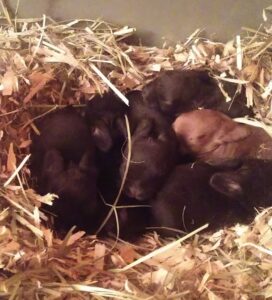 You do have to keep in mind, however, that owning a rabbit (just like any other pet) isn’t always all fun and games. You need to be prepared for the inevitable vet bills, and establishing a relationship with an exotics vet will ease some of your worries if an emergency should one day occur.
You do have to keep in mind, however, that owning a rabbit (just like any other pet) isn’t always all fun and games. You need to be prepared for the inevitable vet bills, and establishing a relationship with an exotics vet will ease some of your worries if an emergency should one day occur. time to shake those muscles loose and take a second swing at this. This time I want to express the enthusiasm, gratitude, and joy my heart and mind feel for all the positive outcomes we’ve experienced this year.
time to shake those muscles loose and take a second swing at this. This time I want to express the enthusiasm, gratitude, and joy my heart and mind feel for all the positive outcomes we’ve experienced this year. Neighborhood Clinics: COVID made it more challenging, but it didn’t stop us from going into neighborhoods to connect with pets directly and provide critical vaccines, microchip identification, and other vital healthcare services. Our specially trained teams of staff and volunteer veterinarians, technicians, and assistants provided services week in and week out to thousands of people in 2021. We partnered with the Animal Rescue League to share data to allow us to map parvo outbreaks in Reading and then work together at community clinics held at Amanda E. Stout Elementary School. This partnership let us help more than we could have alone, and the data sharing allowed us to deliver that help where it was needed most.
Neighborhood Clinics: COVID made it more challenging, but it didn’t stop us from going into neighborhoods to connect with pets directly and provide critical vaccines, microchip identification, and other vital healthcare services. Our specially trained teams of staff and volunteer veterinarians, technicians, and assistants provided services week in and week out to thousands of people in 2021. We partnered with the Animal Rescue League to share data to allow us to map parvo outbreaks in Reading and then work together at community clinics held at Amanda E. Stout Elementary School. This partnership let us help more than we could have alone, and the data sharing allowed us to deliver that help where it was needed most.
 Berks Humane Scholar Center shelter in 2006, it’s lovely to have it become a reality. Both HVH Reading and Lancaster are American Animal Hospital accredited and open to the public. Our hospitals were the first non-profit hospitals in Pennsylvania to achieve accreditation — and among fewer than 30 in the country. Less than 15% of the 36,000 for-profit vet practices are accredited.
Berks Humane Scholar Center shelter in 2006, it’s lovely to have it become a reality. Both HVH Reading and Lancaster are American Animal Hospital accredited and open to the public. Our hospitals were the first non-profit hospitals in Pennsylvania to achieve accreditation — and among fewer than 30 in the country. Less than 15% of the 36,000 for-profit vet practices are accredited. the nation in recognizing the barriers to access to vet care for large portions of our communities and then finding ways to deliver affordable, high-quality care sustainably. I was recently one of only about 50 people nationwide to participate in an ASPCA “Access to Care” Conference, which sought to find ways to expand access and remove barriers to vet care. It’s an exciting effort, and HPA is a recognized national leader and voice in this vital work. If you aren’t already a client of one of our two public hospitals,
the nation in recognizing the barriers to access to vet care for large portions of our communities and then finding ways to deliver affordable, high-quality care sustainably. I was recently one of only about 50 people nationwide to participate in an ASPCA “Access to Care” Conference, which sought to find ways to expand access and remove barriers to vet care. It’s an exciting effort, and HPA is a recognized national leader and voice in this vital work. If you aren’t already a client of one of our two public hospitals,  If you are a veterinarian or a veterinary tech, we’re hiring! You can join a practice that offers all the benefits and support of a “gold-standard” practice, and also lets you help animals and people and practice medicine like a vet — not according to a corporate checklist. You don’t know what you don’t know about Humane Veterinary Hospitals,
If you are a veterinarian or a veterinary tech, we’re hiring! You can join a practice that offers all the benefits and support of a “gold-standard” practice, and also lets you help animals and people and practice medicine like a vet — not according to a corporate checklist. You don’t know what you don’t know about Humane Veterinary Hospitals, 
 year later, he was still terrified of humans. He had no potential adopters, and he no longer had a safe outdoor home. He was really miserable — as were his caretakers.
year later, he was still terrified of humans. He had no potential adopters, and he no longer had a safe outdoor home. He was really miserable — as were his caretakers. Returning sterilized cats to areas where other cats live may seem counterintuitive. However, due to the vacuum effect, new cats move into voids created by the removal of existing cats to take advantage of food, water and shelter. On the other hand, the practice of trapping, removing and killing cats often results in increases in free-roaming cat populations.
Returning sterilized cats to areas where other cats live may seem counterintuitive. However, due to the vacuum effect, new cats move into voids created by the removal of existing cats to take advantage of food, water and shelter. On the other hand, the practice of trapping, removing and killing cats often results in increases in free-roaming cat populations.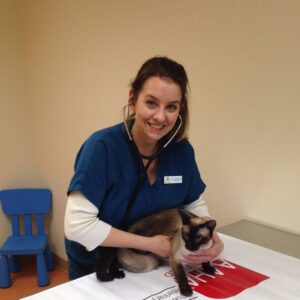 This is your friendly reminder to schedule your annual wellness exam if your kitty hasn’t been to the vet this year. Establishing a relationship with a vet for a wellness visit is essential; it helps ensure that your vet can see your cat should your cat ever have any urgent needs. If your cat is up-to-date with vaccines, a yearly exam is still an important step to make sure your cat remains healthy. A head-to-tail exam for every cat is necessary to assess dental health, monitor body weight, check lumps and bumps, and check lab work to detect early disease in senior cats.
This is your friendly reminder to schedule your annual wellness exam if your kitty hasn’t been to the vet this year. Establishing a relationship with a vet for a wellness visit is essential; it helps ensure that your vet can see your cat should your cat ever have any urgent needs. If your cat is up-to-date with vaccines, a yearly exam is still an important step to make sure your cat remains healthy. A head-to-tail exam for every cat is necessary to assess dental health, monitor body weight, check lumps and bumps, and check lab work to detect early disease in senior cats.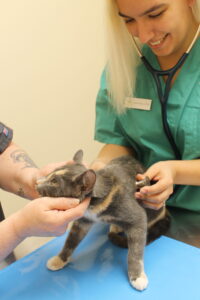 o signify that blood and urine tests should be ordered so that vets can screen for organ or endocrine dysfunction. In addition, fecal samples are recommended annually to screen for intestinal parasite eggs.
o signify that blood and urine tests should be ordered so that vets can screen for organ or endocrine dysfunction. In addition, fecal samples are recommended annually to screen for intestinal parasite eggs. The fear of never seeing them again sets in immediately. Or if they end up hours away – how will someone get in contact with you? What if they’re hurt and need help?
The fear of never seeing them again sets in immediately. Or if they end up hours away – how will someone get in contact with you? What if they’re hurt and need help?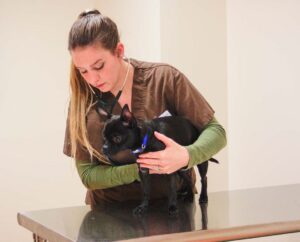
 Remember that dogs grow, lose weight, and gain weight just like people do, so it is important to frequently check how your dog’s collar fits and also that it is in good condition.
Remember that dogs grow, lose weight, and gain weight just like people do, so it is important to frequently check how your dog’s collar fits and also that it is in good condition. their business partner with us for a fundraiser. It’s so lovely to see people really embrace our mission and have an understanding of what Humane Pennsylvania is all about.
their business partner with us for a fundraiser. It’s so lovely to see people really embrace our mission and have an understanding of what Humane Pennsylvania is all about.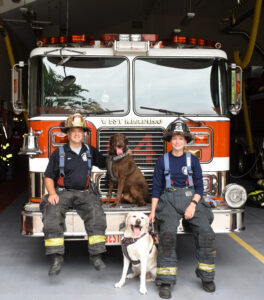 hazard because dogs, cats, mice, bunnies will sometimes chew on them. Unattended lit candles are not only dangerous on their own but can be easily knocked over by pets.
hazard because dogs, cats, mice, bunnies will sometimes chew on them. Unattended lit candles are not only dangerous on their own but can be easily knocked over by pets. A.G.: If you can’t get them out, DO NOT go back in to get them. Let the arriving responders know the last known location and a description of the animal.
A.G.: If you can’t get them out, DO NOT go back in to get them. Let the arriving responders know the last known location and a description of the animal.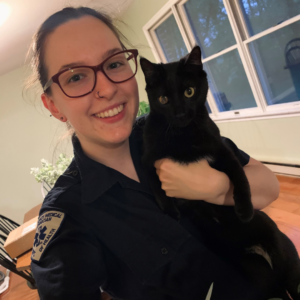
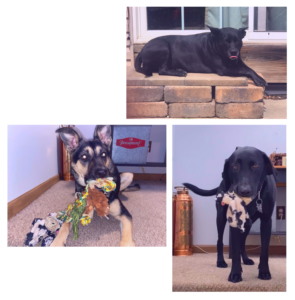 “Being part of the EMS life is harder than most can handle! You see people at perhaps the worst times in their lives — when they are extremely sick, injured, facing death, or even when they are at rock bottom. Most times the comfort you provide, besides the medicine and treatment, is all people need. When I come home from my shifts, it takes a while to unwind and clear my mind from everything that’s been encountered in my shift. I come home and before I can get the door open, my pups — Koda, Bella, and Hunter — are usually whining and crying because they can’t wait for me to come in!
“Being part of the EMS life is harder than most can handle! You see people at perhaps the worst times in their lives — when they are extremely sick, injured, facing death, or even when they are at rock bottom. Most times the comfort you provide, besides the medicine and treatment, is all people need. When I come home from my shifts, it takes a while to unwind and clear my mind from everything that’s been encountered in my shift. I come home and before I can get the door open, my pups — Koda, Bella, and Hunter — are usually whining and crying because they can’t wait for me to come in!